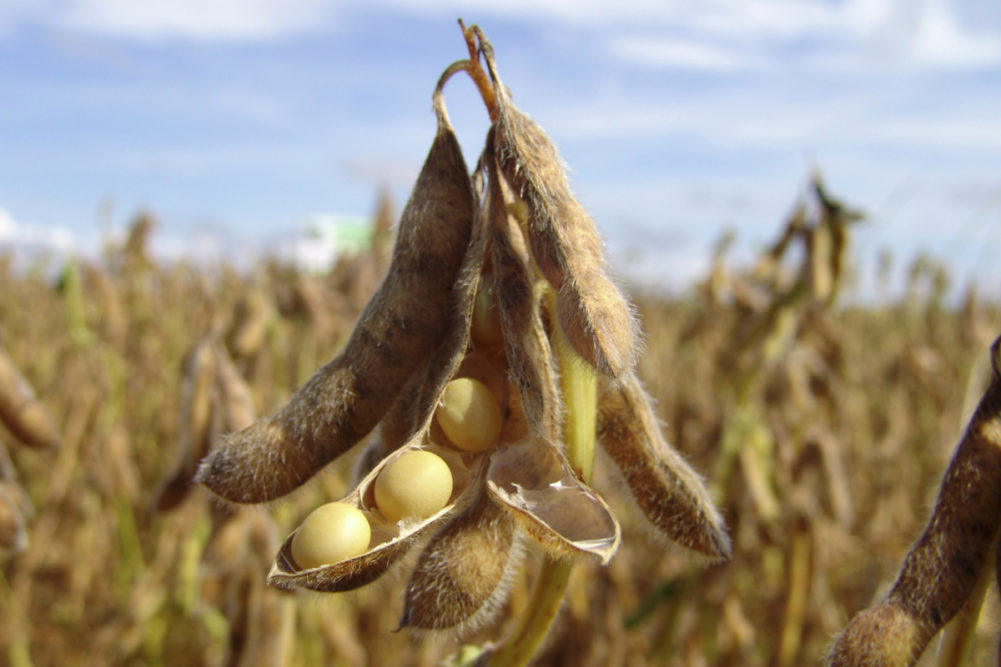Prices in a tight world oilseeds market have risen sharply in recent weeks, with demand on the rise, buoyed by a stronger vegetable oil market, while production forecasts and availability for export have fallen.
In its Food Price Index report for November, the United Nations Food and Agriculture Organization (FAO) called the month-on-month rise in world vegetable oil prices, at 14.5%, “stunning,” noting that the level was the highest since March 2014.
“The rally mainly reflects additional spikes in palm oil prices, combined with further increases in soy, rapeseed and sunflowerseed oil values,” the FAO said. “International palm oil price quotations rose for a sixth consecutive month, underpinned by sharp contractions in world inventory levels, as smaller-than-customary output in major producing countries coincided with firm global import demand.”
The FAO noted that soy oil prices firmed amid subdued export availabilities in South America and upbeat import demand, notably from India.
“Likewise, rapeseed and sunflowerseed oil values strengthened further on limited supplies,” the FAO added. “Meanwhile, firming petroleum prices also lent support to vegetable oil prices.”
In its Oil Crops Outlook report of Dec. 14, the USDA’s Economic Research Service (ERS) said that forecast 2020-21 global soybean production had been cut by 586,000 tonnes, compared with the figure produced a month earlier, to 362.1 million.
“Expected crop reductions in Argentina, Mexico, and the EU are only partly offset by increases for Canada and Uruguay,” the ERS said. “The coupling of production changes with higher use is anticipated to trim 2020-21 global soybean stocks by another 880,000 tonnes to 85.6 million.”

Soybean planting is now well advanced in Argentina, the ERS said
“The country’s ministry of agriculture reports that 54% of the 2020-21 crop was sown as of Dec. 3,” the ERS said. “Dimmer prospects for sown soybean area are seen, partly due to dry soil conditions. Despite some recent improvement, September-November rainfall for the country’s core soybean-producing region was no better than 40% to 50% of normal.”
With area down, forecast Argentine production has been cut by 1 million tonnes, to 50 million.
“Demand for US soybean oil supplies in 2020-21 is being accentuated by shortfalls in foreign oilseeds and vegetable oil production,” the ERS said. “So, despite surging US soybean oil prices, exports are still at a competitive advantage versus other origins.
“Seldom is US soybean oil competitive in India with other sources, but sales are already booked there this year.”
The ERS also reported that soaring prices for palm oil are having an acute impact on global trade.
“Malaysian palm oil stocks have continued to tighten as production is heading toward a seasonal low,” the ERS said. “Despite sustained improvement in Malaysian rainfall throughout 2020, palm oil output is still encumbered there by past reductions in fertilizer use as well as pandemic-related labor shortages. Compared with a year ago, the benchmark price for crude palm oil in Malaysia has climbed by $237 per tonne and is approaching an eight-year high.”
In its Nov. 26 Grain Market Report, the International Grains Council (IGC) said that with global market sentiment buoyed by strong export interest and underlying worries about South American crop weather, its price index for soybeans had risen by around 7% in the previous month, reaching its highest level in over five years.
“After initial weakness, Chicago soybean futures surged, the spot price rising by 12% m/m, as Chinese demand for US supplies underpinned,” the IGC said. “Although fieldwork picked up in Brazil, as sowings in the leading producing state of Mato Grosso approached completion, worries about dryness remained a key influence throughout the month.
“Less than optimal conditions in Argentina added support, as did gains in external markets, including equities and crude oil. While basis levels retreated from earlier peaks, tied to signs of softer buying interest from China, Gulf export quotations were still up by 7% m/m, at $482 fob.”
Against the backdrop of firmer US futures and a stronger domestic currency, Brazilian (Paranagua) spot values advanced by 6%, to $529 fob, the IGC said.
Chris Lyddon is World Grain’s European correspondent. He may be contacted at: chris.lyddon@ntlworld.com.






